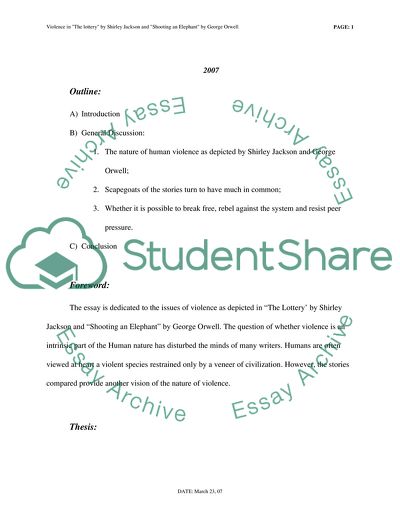Violence as an Intrinsic Part of the Human Nature Thesis Proposal Example | Topics and Well Written Essays - 2000 words. https://studentshare.org/literature/1706824-violence-like-an-intrinsic-part-of-the-human-nature
Violence As an Intrinsic Part of the Human Nature Thesis Proposal Example | Topics and Well Written Essays - 2000 Words. https://studentshare.org/literature/1706824-violence-like-an-intrinsic-part-of-the-human-nature.


